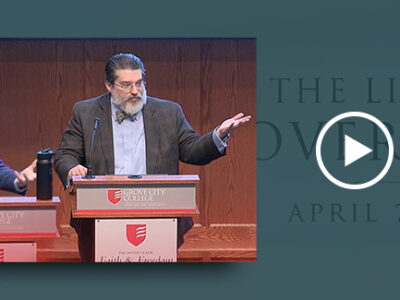Air power is seductive. From the Army Air Service’s Col. Billy Mitchell’s Winged Defense, written in the aftermath of the slaughter fields of the Great War, to U.S. Air Force Colonel John Warden’s The Air Campaign, first published in 1988, air power prophets have promised quick victories at low costs.
Following World War II, the Truman administration capped military spending at $12 billion and reduced the Army to 10 under-strength divisions, confident that America’s atomic monopoly would cow the legions of the Red Army.
When in June 1950 North Korea, undeterred by America’s atomic arsenal, attacked South Korea, U.S. forces found themselves woefully unprepared for conventional warfare. Soldiers and Marines paid the price in the Korean stalemate, suffering nearly 40,000 combat deaths.
After Dwight Eisenhower won the election of 1952, warlords in the Pentagon believed a five-star general in the White House would usher in an age of military bounty. Wrong. Eisenhower capped defense spending at less than $40 billion annually, reduced the Army from a Korean War high of 20 down to 14 under-strength divisions, and instituted a strategy of massive retaliation to forestall Soviet and Chinese aggression. Air power leaders maintained that nuclear weapons could deter both large and small wars and would be efficacious in any war should deterrence fail. Subsequently, the Air Force dominated the budget battles of the 1950s, garnering $17 billion annually while the Army barely managed $9 billion. In the last defense budget submitted by the Eisenhower administration, the budget for the Strategic Air Command (the Air Force’s command charged with the nuclear mission), was larger than that of the entire U.S. Army.
Meanwhile, in 1961 the Soviet Union shifted its strategy to support wars of national liberation, backing insurgencies throughout the post-colonial world.
President John F. Kennedy met this challenge by shifting U.S. defense policy away from massive retaliation towards flexible response and swinging from an air-power-centric strategy to a more balanced strategic paradigm involving larger ground forces. Kennedy also drew his “line in the sand” in South Vietnam.
In 1964, faced with a growing insurgency in South Vietnam supported and manipulated by communist leaders in Hanoi, President Lyndon Johnson turned to his Joint Chiefs for their strategic assessments. Army and Marine Corps leaders warned any war in Indochina might last 10 years or more, entail troop commitments of half-a-million and result in 50,000 combat deaths. Air-power advocates scoffed. The Air Force touted a 28-day bombing campaign taking out 94 targets in North Vietnam as sufficient for ending further “aggression” against the South. Johnson, seduced by the promise of high gains for low costs, launched Operation Rolling Thunder in March 1965, a bombing campaign against North Vietnam that lasted until November 1968 … accomplishing nothing. The southern insurgents, meanwhile, responded by attacking American airfields in South Vietnam, necessitating the deployment of U.S. ground forces to protect these bases. The Vietnam quagmire resulted from the failed promises of air-power enthusiasts.
Within three years, over half-a-million U.S. service personnel were stationed in South Vietnam and casualties hit 2,000 a month. Before the American involvement ended in January 1973, soldiers and marines accounted for more than 45,000 of the 48,000 combat deaths.
Thirty years after the end of World War II, the hollow promises of air-power enthusiasts provided only a stalemate in Korea and a tragic defeat in Vietnam. Then, after President Jimmy Carter slashed military budgets during the malaise that followed, beginning in 1981, Ronald Reagan undertook the largest peacetime military buildup in American history so that by 1991, after 39 days of precision bombing, ground forces took less than 100 hours to eject the Iraqi Army from Kuwait.
In the post-Cold War 1990s, the Clinton administration reduced the Army from 1,000,000 to 485,000 soldiers. Budget battles between the Army and Air Force proved particularly acrimonious as air-power leaders touted the Air Force as the primary force of the future, one to be supported by land and sea components.
In the War on Terror, the Army and Marine Corps—not the Air Force—emerged as the “primary and supported forces” while airmen provided close air support, reconnaissance and logistics.
Both major presidential candidates have loaded their defense advisory teams with air-power/high-tech warfare enthusiasts. If history is any harbinger, in the aftermath of the fighting in Iraq and Afghanistan, land forces will again be cut to sustain expensive weapons acquisition programs for the Air Force and Navy in anticipation of future confrontations with China, a resurgent Russia or with petro-fascist regimes in Iran and Venezuela.
The Department of Defense, with its separate land, sea and air services, remains basically unchanged from a structure suitable for fighting the Industrial Age, global conflicts of the 20th Century. It urgently needs a complete overhaul to face the realities and challenges of this century. Hopefully, the next administration will be up to the challenge.




